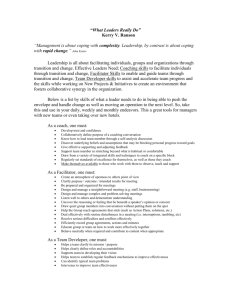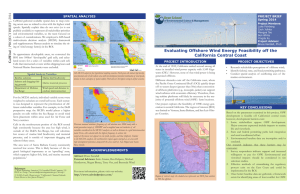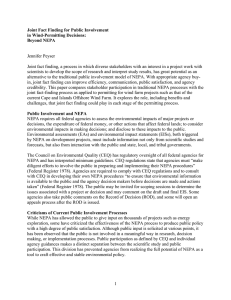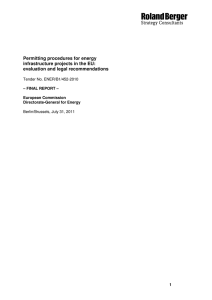Simulation Game: Determining The Scope of Offshore Wind Energy Projects Goal: Background:
advertisement
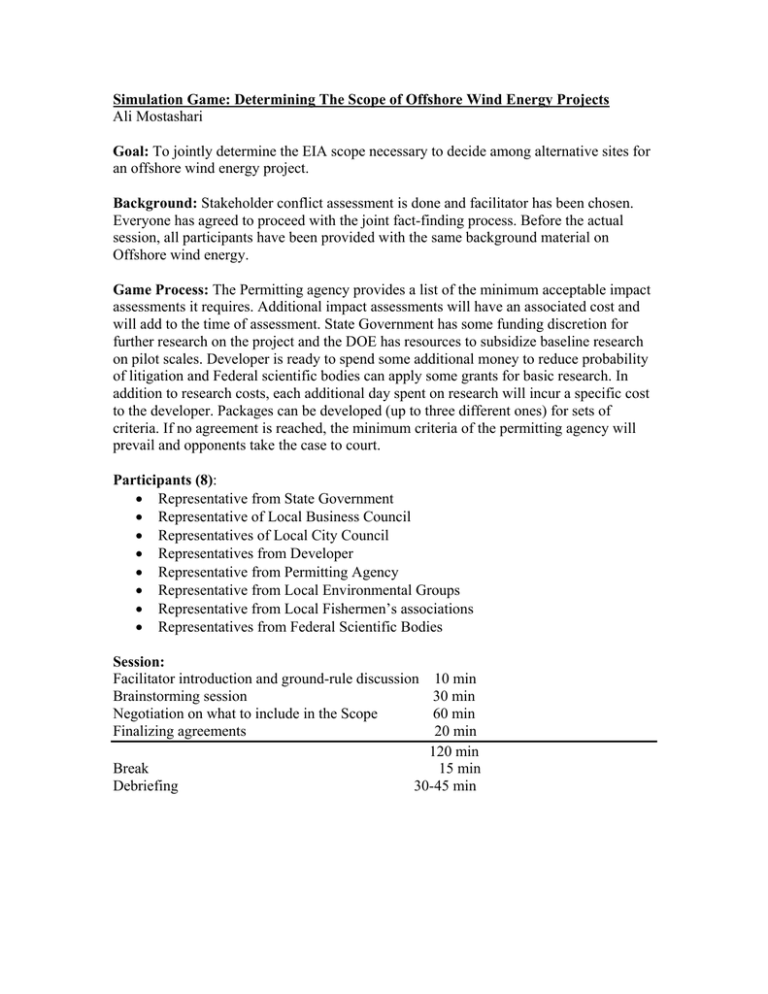
Simulation Game: Determining The Scope of Offshore Wind Energy Projects Ali Mostashari Goal: To jointly determine the EIA scope necessary to decide among alternative sites for an offshore wind energy project. Background: Stakeholder conflict assessment is done and facilitator has been chosen. Everyone has agreed to proceed with the joint fact-finding process. Before the actual session, all participants have been provided with the same background material on Offshore wind energy. Game Process: The Permitting agency provides a list of the minimum acceptable impact assessments it requires. Additional impact assessments will have an associated cost and will add to the time of assessment. State Government has some funding discretion for further research on the project and the DOE has resources to subsidize baseline research on pilot scales. Developer is ready to spend some additional money to reduce probability of litigation and Federal scientific bodies can apply some grants for basic research. In addition to research costs, each additional day spent on research will incur a specific cost to the developer. Packages can be developed (up to three different ones) for sets of criteria. If no agreement is reached, the minimum criteria of the permitting agency will prevail and opponents take the case to court. Participants (8): • Representative from State Government • Representative of Local Business Council • Representatives of Local City Council • Representatives from Developer • Representative from Permitting Agency • Representative from Local Environmental Groups • Representative from Local Fishermen’s associations • Representatives from Federal Scientific Bodies Session: Facilitator introduction and ground-rule discussion 10 min Brainstorming session 30 min Negotiation on what to include in the Scope 60 min Finalizing agreements 20 min 120 min Break 15 min Debriefing 30-45 min




